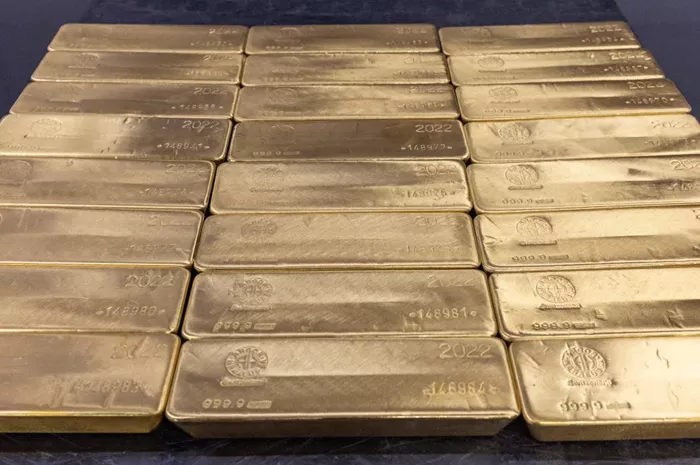Gold prices saw a slight decline in Asian trading on Monday, as stronger-than-expected U.S. nonfarm payrolls data raised concerns about the pace of interest rate cuts. The data, which showed a stronger labor market, boosted the U.S. dollar and led traders to scale back expectations for significant rate cuts this year.
Industrial metals, such as copper, received limited support despite news that China’s copper imports had reached a 13-month high in December. However, the overall sentiment towards China remained cautious, with concerns over the potential imposition of additional U.S. trade tariffs under President-elect Donald Trump’s administration.
While the economic uncertainty surrounding Trump’s upcoming presidency has kept some demand for gold as a safe haven, broader market weakness—particularly in stocks—limited the losses for the precious metal.
At 23:49 ET (04:49 GMT), spot gold was down 0.1%, trading at $2,686.32 an ounce, while February gold futures remained relatively stable at $2,714.41 an ounce.
Gold Prices Under Pressure Amid Rate Hike Expectations; Inflation Data in Focus
Gold prices continued to face downward pressure, primarily driven by concerns over U.S. interest rates staying higher for longer. Following Friday’s stronger-than-expected payrolls report, traders reduced their bets on potential rate cuts, anticipating the Federal Reserve will maintain its hawkish stance for the time being.
Market attention is now shifting to the upcoming U.S. inflation data, scheduled for release on Wednesday, which could provide further insight into the Fed’s rate outlook. The central bank has signaled that persistent inflation and strength in the labor market could prompt it to keep rates elevated.
In a recent note, Goldman Sachs analysts revised their expectations, forecasting only two rate cuts by the Fed this year, down from three previously. They also expect the central bank’s terminal rate to be higher during this easing cycle, which puts additional pressure on gold and other precious metals as higher rates increase the opportunity cost of holding non-yielding assets.
Other precious metals followed gold’s decline, with platinum futures slipping to $991.45 an ounce and silver futures falling 0.4% to $31.205 an ounce.
Copper Prices Stable as China Demand Supports Outlook
On the London Metal Exchange, benchmark copper futures rose by 0.3% to $9,111.00 per ounce, while March copper futures climbed 0.1% to $4.2960 per pound.
Copper’s positive momentum continued from the previous week, as traders placed increased bets on additional stimulus measures from China to support economic growth. This comes after weak Chinese economic data, which has raised expectations of more government action.
Recent trade data revealed that China’s copper imports surged to 559,000 metric tons in December, the highest level in 13 months, suggesting that demand from the world’s largest copper importer remains robust.
Despite concerns over U.S. trade tariffs, copper traders remain optimistic that Beijing will roll out further stimulus in the coming months. President-elect Donald Trump has pledged to impose significant trade tariffs on China starting from his first day in office on January 20, adding an element of uncertainty to the market.
Related topics:
- India Surpasses China in Gold Purchases, Buying 51% More in Three Months
- Gold Rates Skyrocket in Chennai on Diwali, 24K Gold Exceeds Rs. 81,000 Per 10 Grams
- Gold Prices Expected to Reach $3,000 per Ounce by 2025, Analysts Forecast


